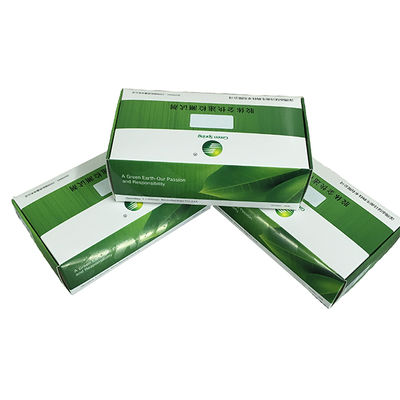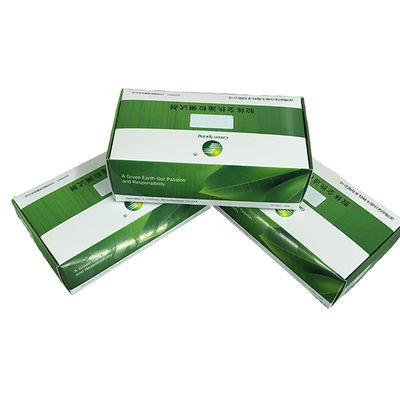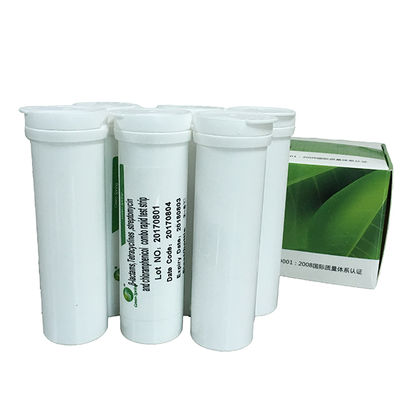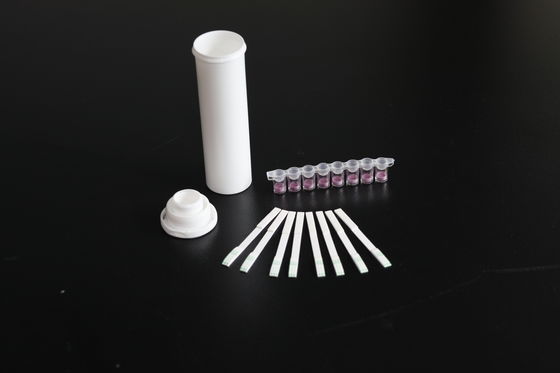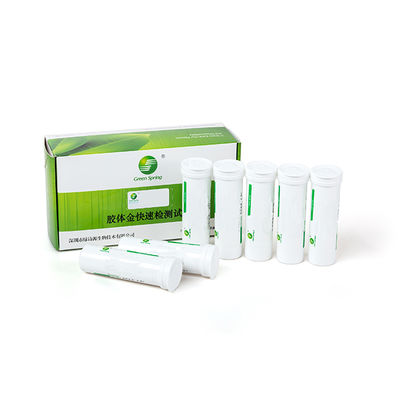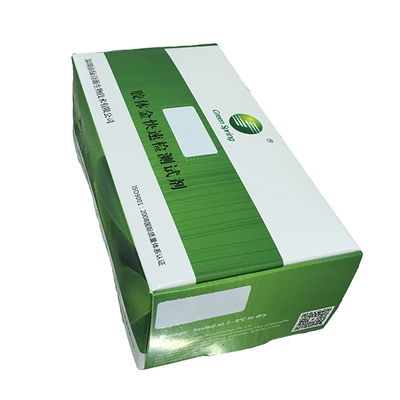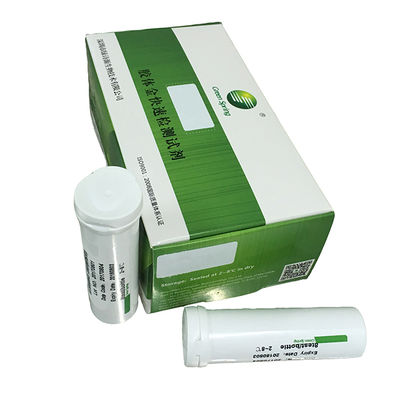|
|
Rapid Test Kits for detecting Quinolones residue in eggs sample detection limit 1-6ppb
Product Details:
Payment & Shipping Terms:
|
| Packing: | 96tests/kit | Shelf Life: | 12 Months When Properly Stored |
|---|---|---|---|
| Sample Performance: | Eggs, Duck Eggs | Detection Limit: | 1-6 μg/kg(ppb) |
Quinolones rapid test strip (Egg)
Catalog No. LSY-20047G4e
1. Brief
This product is used for testing Quinolones in egg, duck egg etc. sample qualitatively. The whole test need 10min. Easy to operate, high sensitivity.
2. Detection limit μg/kg(ppb)
| Name | Detection limit | Name | Detection limit |
| Enrofloxacin | 2 | Enoxacin | 3 |
| theCiprofloxacin | 3 | Marbofloxacin | 6 |
| Danofloxacin | 2 | Ofloxacin | 2 |
| Flumequine | 3 | Norfloxacin | 2 |
| Sarafloxacin | 5 | Pefloxacin | 2 |
| Difloxacin | 3 | Lomefloxacin | 2 |
| Oxilinic acid | 1 |
3. Contents
| 1 | Quinolones test strip and micro-well reagent | 16 strip/bottle, 6 bottle/kit |
| 2 | Instructions | 1 piece |
| 3 | 10X concentrated sample buffer | 1 bottle (50ml/bottle) |
4. Principle
The colloidal gold immuno-chromatography was used to detect the Quinolones residue in the samples. The binding of Quinolones to the specific monoclonal antibody labeled with colloidal gold inhibited the binding of the antibody to the conjugates of Quinolones-BSA on the NC membrane Testing line, which resulted in the color depth variation of the testing line.
5. Testing equipment required
Instruments: balance, micropipette, oscillator (optional), homogenizer
Consumables: 15/50ml centrifuge tube, disposable tips.
- Sample buffer: Dilute 10X concentrated sample buffer with deionized water at 1:9 to get sample buffer. (for example: 1 part of 10X concentrated sample buffer + 9 parts of deionized water)
7. Sample preparation
Eggs: take 1g fresh mixed well egg sample, add 4ml sample buffer, shake by hand or oscillator strongly for 1min, ready to test.
8. Operation procedures
8.1 Read the instruction carefully before use. Return test strips and sample into room temperature.
8.2 Take bottles needed from the kit package, take out required microwells and dipsticks, making proper marks. Please use these test dipsticks within 1h. Seal the cap of the bottles, avoid moisture.
8.3 Take 200ul of the test samples into the microwells, then slowly aspirate for 5 times, mix the sample with the reagent in the microwells completely, until no solid observed by eyes (this is a very important step).
8.4 Incubate for 5min at room temperature (20-40℃), then insert the test strips into the microwells with the "MAX" end fully dipped in to the mixture solution.
8.5 After immersing the test strip in the micro-well for 5 minutes, take out the strip, interpret the results according to the schematic diagram. Please interpret the results within 1 minutes, otherwise interpretation will be invalid.
9. Test Result Interpretation
9.1 Negative: T line is darker than C line, or T line has same color with C line. It means there is no Quinolones residue in sample or the residue is lower than detection limit.
9.2 Positive: T line is obviously lighter than C line or T line is invisible. It means the Quinolones residue is equal to or higher than detection limit.
9.3 Invalidation: C line isn’t seen wine red. It means the test strip is out of efficacy, out of date or improper operation. Please run the test again using another package. If the invalid tests keep happening, please contact the supplier.
![]()
10. Precautions
1). The test strip is disposable at room temperature; Do not use expired test strips.
2). Disposable tips cannot be reused to avoid cross contamination.
3). Try not to touch the white film surface in the center of the test strip during use; Avoid direct sunlight and direct fan blowing.
4). The egg sample must be a uniform liquid, without clumping, souring, or precipitation.
5). Tap water, distilled water, deionized water, or sample extracts cannot be used as negative controls.
6). If a positive result appears, it is recommended to retest with this test strip.
7). Due to differences in samples, some detection lines may appear lighter or grayish in color, but as long as a red band appears, it can be determined.
8). If you encounter any problems during the experiment, please contact our company.
11. Safety performance and garbage disposal
This product's test strips and packaging are non-toxic and harmless, and should be disposed of as dry waste after use.
12. Storage and expiry date
Storage: Store at 2-8 ℃ in dark, sealed, dry place, no frozen.
Expiry date: 12 months; date of production is on box.
Shenzhen Lvshiyuan Biotechnology Co., Ltd
D Building, National Biological Industrial Park of Marinelife, No.2 Binhai Road, Dapeng, Shenzhen, 518120 China
Tel. 86-755-28438788
Fax 86-755-28938800
Email: info@lsybt.com
![]()
![]()
![]()
![]()
-
Rapid Test Kits for detecting Sulfonamides residue in eggs sample detection limit 5-10ppb
-
Rapid Test Kits for detecting Nitrofuran(SEM) residue in eggs sample detection limit 0.5ppb
-
Rapid Test Kits for detecting Nitrofuran(AHD) residue in eggs sample detection limit 0.5ppb
-
Rapid Test Kits for detecting Nitrofuran(AOZ) residue in eggs sample detection limit 0.5ppb
-
Rapid Test Kits for detecting Nitrofuran(AMOZ) residue in eggs sample detection limit 0.5ppb
-
Rapid Test Kits for detecting theChloramphenicol antibiotic residue in eggs sample detection limit 0.1ppb

